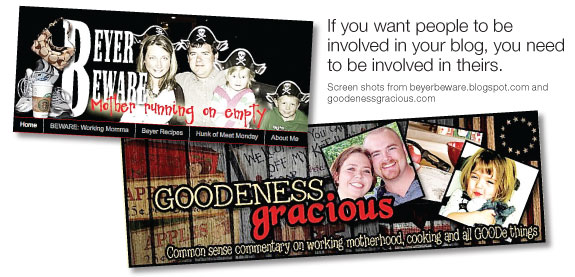After following The Pioneer Woman, Ree Drummond, at http://thepioneerwoman.com, Leah Beyer and Cris Goode discovered she was on to something. This ranch wife and mother of four managed to intertwine her hobbies with her life on the ranch in a way that builds relationships while also creating agricultural awareness.

Do you “like” Facebook? Do you “tweet” often? Maybe it’s time to try out the third leg of social media – blogging.
Inspired, Beyer and Goode created their own blogs and now assist others in doing the same. They recently led a training workshop in Madison, Wisconsin, for the Professional Dairy Producers of Wisconsin.
Blog development
When developing your blog, think of hobbies or interests you have other than farming. They could be cooking, decorating, scrapbooking, sewing, gardening, exercising, etc.
“Connect to the audience on common ground and then work in agriculture,” Beyer said.
A small segment of the population is involved in agriculture, but a much larger portion participates in the activities listed above. When you can engage with them socially on common ground, you can begin to build a relationship. With relationships come trust. As the personal connection develops, your new non-agricultural audience is more likely to listen to your viewpoints on food safety, animal welfare and production agriculture.
Before you begin your blog, define your target audience and plan content for them. Beyer and Goode advise talking about the things your target audience is talking about, being positive and funny, mixing in ag and non-ag content, and – most importantly – making it about you.
The next step is to come up with a creative name and add a tagline to further define your blog. Then, build it. These bloggers recommend starting with Blogger at www.blogger.com . Another common blog builder is WordPress at www.wordpress.com . Once you’ve decided on a program, establish your URL, choose a template and add gadgets or widgets. Now, it’s time to blog.
Don’t feel like you need to post every hour, but a frequency of once a day or a few times a week will help increase your audience reach.
Consider adding pages to your blog for general content. Additional pages can be good for first-time readers, combining frequent topics, about me, contact me or favorite posts, Goode said.
Building a community
Once you’ve joined the blogosphere, it is time to get connected. Encourage your friends and family to visit your blog by handing out business cards; putting your blog address on your family Christmas card; and e-mailing, tweeting or linking your new blog post through Facebook or Proud to Dairy accounts.
When you’re ready to go beyond the choir, a new world of friendship awaits, Goode said.
With that friendship comes some etiquette lessons. If you want people to be involved in your blog, you need to be involved in theirs. They recommend you read other blogs, comment on those you like, publicly follow the blogs you like, interact with your fans and followers, reciprocate comments and develop a blogroll.
As you participate with others, they are more likely to comment and participate with your blog. “Blog comments are more influential than posts,” Goode said. “They give your reader a balanced conversation.”
Once you are a more experienced blogger, you can strengthen and build your connections by participating in carnivals, Blog Hops, Linkies and other blogging communities.
As a beginning blogger, feel free to learn from other bloggers just as Beyer and Goode learned from The Pioneer Woman. Beyer’s blog can be found at http://beyerbeware.blogspot.com . Goode blogs at www.goodenessgracious.com . PD
Check out this related Progressive Event feature: Blog training builds more ag communicators .

-
Karen Lee
- Editor
- Progressive Dairyman
- Email Karen Lee



